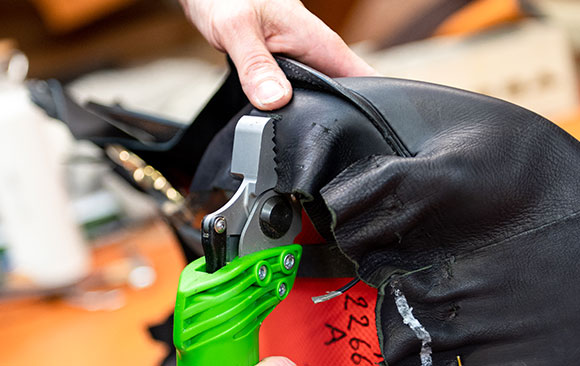Let’s take a closer look at a new tool that has improved conditions in the workshop: the pneumatic clamp. It replaces the traditional assembly clamp which led to musculoskeletal disorders, particularly in the palm of the hand and the phalanges. BUTET teamed up with CTC, based in Lyon, and drew inspiration from pneumatic secateurs with similar features.
The aim was to adapt the tool to reduce the pressure that is exerted using the manual clamp. CTC called upon the expertise of Eprose, the French leader in designing leather working tools and which is, moreover, specialized in the development of specific industrial tools, which filed the patent.
An in-depth comparative analysis of the two tools was conducted to verify the suitability of the self-adjusting clamp. The same movement was performed using gloves equipped with sensors to compare similar efforts, on the same area of the saddle and for the same operation.
It was then possible to observe a significant decrease in maximum pressure when using the self-adjusting clamp. In practical terms, the pressure exerted by the fingers and hand was reduced by almost 30% in the phalanges and by 50% in the palm of the hand. The force required by the hand to clamp is, therefore, greatly reduced.
The results of this joint effort now benefit everyone in the leather industry (saddle makers, leather goods manufacturers, and shoemakers in particular). It encourages operators to relearn certain movements, which until now were carried out using only the physical strength of their hands.
A great innovation that is now being rolled out to all our production sites to improve the working conditions of all our artisan saddle makers.


